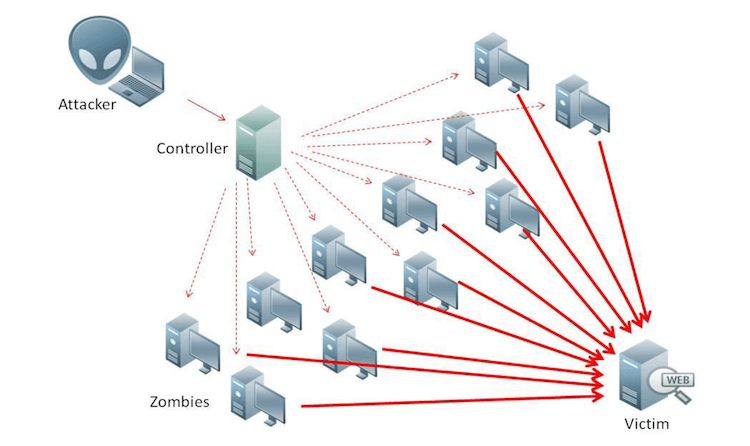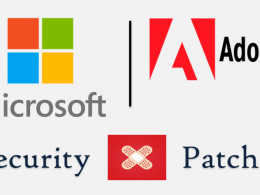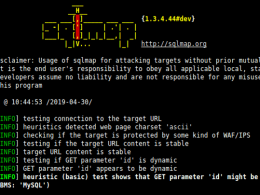In the online world, security is a major issue – it is something that should not be taken lightly. One of the biggest threats to your website is a DDoS attack. This means that anyone who owns a business website needs to know how to prevent them.
These attacks can happen at any moment, so it is prudent to be prepared. On top of that, any website is a potential target – it doesn’t matter what industry it is. And the worst part is that a single attack can cause you to lose thousands of dollars.
Yes, DDoS attacks are that serious so you definitely should keep it in mind while creating your business website. The longer they occur, the more you hemorrhage money. Which is why it is even more disturbing to learn that they are growing in frequency, magnitude, duration and complexity as time goes on.
What is a DDoS Attack?

A DDoS (Distributed Denial of Service) attack on a website is a type of cyber attack aimed at causing widespread connectivity or network service issues to your users. The cybercriminals target your website using a number of malware-infected computers.
For example, if you own an online store, a DDoS attack would overwhelm your server with tons of traffic. With this overload, anyone trying to log in to your site to make a purchase will be unable to do so. This means you lose revenue.
In fact, DDoS attacks are so scary that they are estimated to cost businesses $20,000-$40,000 per hour, according to recent security surveys. This makes DDoS attack prevention a priority.
How to Prevent DDoS Attacks – 5 Tips
DDoS protection might not be an easy task, but it is one that is extremely important, considering the loss of revenue. Couple that with the fact that they have increased nearly three times in the past three years, knowing how to prevent DDoS attacks becomes a must.
Here are five tips you can use for DDoS attack prevention.
1. Choosing a Reliable Hosting Provider
Since the ultimate destination of a DDoS attack is the server, it makes sense to find a reliable hosting company that offers DDoS attack prevention. It is rather unfortunate that not all hosting providers provide this vital service.
Indeed, there are measures you can take to prevent a DDoS attack from getting to the point where your hosting provider should step in. However, it should give you some extra piece of mind to know that should all else fail, your hosting company has got you covered.
2. Recognize the Warning Signs

One of the best tips on how to prevent a DDoS attack is recognizing when one is about to happen. As a website owner, you probably have some monitoring and analytics tools that you can use to track your website. These tools include your firewall or any intrusion detection systems that you have installed.
Take a look at the 30- to 90-day patterns and try to see if there is any unusual activity. There are some warning signs that can alert you that a DDoS attack could be happening. These include:
- Continuous and regular network website downtime
- Unexplained network slowdown when accessing files on the website
- Internet disconnection
The early you can detect the DDoS attack and take action, the better.
3. Use Cloud-Based DDoS Prevention
When it comes to DDoS prevention, your on-premises hardware needs to be up for the task. But since the frequency and magnitude of these attacks is on the rise, relying on your own hardware is no longer enough. It will more likely fail.
Luckily, you can outsource your DDoS attack protection to service providers with cloud-based facilities.
These service providers simply have the resources needed to fend off the attacks of any size. It doesn’t matter how often they occur. And due to the nature of DDoS protection cloud apps, they can absorb the entirety of the attack. This prevents it from reaching your website.
And most importantly, these cloud-based service providers have engineers whose sole purpose is to monitor DDoS attacks. This means you don’t have to always be on the lookout yourself – ultimately, you will never skip a beat when it comes to website security.
4. Make Sure Your Network Infrastructure is Secure
Redundancy might seem superfluous, but it is essential to network security. Having backup servers could be the very thing that can prevent a DDoS attack from crippling your website entirely. You don’t want to make the work of cybercriminals easier by giving them a single server to focus their efforts on.
The logic here is simple: should one server fall, other servers can take on the workload. Make sure that all backup servers are not located in one location either. Keep them spread out across different geographical locations.
That should keep the DDoS attack contained and make it extremely difficult (nearly impossible) for it to bring down your website.
5. Make Your Hardware and Software DDoS Attack Proof
If you are using a hosting company, then you do not need to worry about this step. But if you are self-hosting your website, then you need to make sure that your servers are ready to fight off a DDoS attack. This means making sure that all routers and firewalls are configured to identify and reject suspicious traffic
Due to the seriousness of DDoS attacks, most hardware and software vendors make sure that their products are outfitted with anti-DDoS features. Your job? Just make sure that each of them is updated to include all the latest security updates and patches.
Now You’re Prepared to Handle DDoS Attacks
A DDoS attack on your website is not a joke. If it is successfully executed, you stand to lose a lot of revenue. This is why knowing how to prevent it is a must.
Armed with the knowledge of what it is and how to prevent it, you can take the appropriate measures for DDoS attack prevention. It all starts with choosing a reliable host to making sure that your hardware and software is anti-DDoS.
Now you are ready to make sure that one doesn’t cause your business website some problems.











